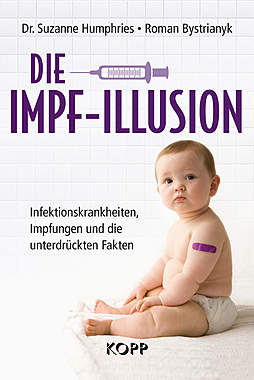- US-Wirtschaftsdaten: NAPM, Construction Spending, Agricultural Prices - COSA, 01.05.2001, 19:54
- Danke.. werde morgen nen Vorrat an Joghurts kaufen ;) owT - YIHI, 01.05.2001, 19:57
Danke.. werde morgen nen Vorrat an Joghurts kaufen ;) owT
>Hi!
>Nach dem schönen Maitag folgen nun verspätet die Wirtschaftsdaten. Zunächst der NAPM - der Einkaufsmanager-Index für den April, der mit 43,2 unterhalb der Erwartungen von 44,0 ausfiel, und nur marginal von 43,1 auf 43,2 anstieg. Nun ist der Index den 9. Monat in Folge unterhalb der Marke von 50 Punkten und spiegelt einen Rückgang des verarbeitenden Gewerbes wider. Analysten meinen der Boden sei erreicht.
>> ~ The NAPM index essentially held steady in April reaching a level of 43.2%. This was the ninth consecutive month of decline in the manufacturing industry, but it now appears that the worst of the current downturn is now past for the industry.
> ~ The production indices generally indicated improvement in April, though they all remain weak. It appears that an inventory correction has successfully taken place in manufacturing. With both the new orders and the backlog of orders indices still below 50% a quick rebound is very unlikely.
> ~ The employment fell to 38.1% in April. This is consistent with the payroll report for manufacturing employment, which has been suggesting large declines in recent months.
> ~ The prices index fell to 48.9% in April, the lowest the index has been in two years. Between this and the supplier deliveries slipping to 47.4%, the Fed has little to fear from inflationary pressures.
> ~ The new export orders index fell back below 50% in April, and has suggested a decline in new export orders for six of the last seven months. If foreign demand improves substantially it will be a boon for the manufacturing industry.
> ~ Link zum NAPM</ul>
>
> ~ und nun zum Construction Spending - den Ausgaben im Baugewerbe fĂĽr
>März. Diese stiegen explosionsartig auf +1,3% im Vergleich zum Vormonat, erwartet wurden unveränderte Werte bei 0,0%. Der 5. Monat in Folge, der einen Anstieg verzeichnete. Dabei konnten die Ausgaben für öffentliche Bauten wie auch für private Bauten ohne Wohnungen/Häuser zum Wohnen eine Zunahme sehen, letztere fielen von 2,5 im Februar auf 0,3 im März.
>[img]" alt="[image]" style="margin: 5px 0px 5px 0px" />
><ul> ~ Summary
> ~ Construction spending rose 1.3% in March. There has now been five solid months of rising construction activity.
> ~ New residential completion values were lower, with both single- and multifamily projects falling.
> ~ Remodeling expenditures rose for the second consecutive month, following a three month fall.
> ~ Private, nonresidential building rose 3.4% and was 9.8% above one year ago. All major components were higher.
> ~ Public building rebounded as highway completions rose strongly and education projects reversed a two month slide.
> ~ Link zum </ul>
> ~ bleiben noch die Agricultural Prices - die Agrarpreise für den April, die um 3,9% zunahmen. Die sind für die gesamtwirtschaftliche Entwicklung zwar nicht so wichtig, aber was solls, der Vollständigkeit halber ;-)
>Dabei nahmen hauptsächlich die Obstpreise zu - Erdbeerpreise stiegen aufgrund der Wetterverhältnisse in Californien. Aber auch die Preise für Milchprodukte und Fleisch nahmen zu.
>[img][/img]
><ul> ~ Summary
> ~ April’s top line number for farm prices was quite strong, but underlying it appears to be just some temporary volatility among fruits, nuts and vegetables. What can be said is that price increases for such items have the potential of impacting consumers more directly than price increases in goods that undergo more stages of processing.
> ~ On the grain side though, there was nothing to cheer for (from a producer standpoint), as relief continues to be elusive for farmers in the Midwest and South. The price problems in the farm sector will not be considered past until there is relief for grain and oilseed farmers.
> ~ Foot and mouth has increased near-term demand for U.S. livestock, but one must worry about the long-term effects on consumption if consumers grow to fear modern livestock practices.
> ~ Milk prices also increased, also related to foot and mouth. All-in-all, milk prices have not been as bad as some would have us believe.
> ~ Link zu den Agrarpreisen</ul>
>Fazit: Der Einkaufsmanager-Index bietet wenig Anhalt fĂĽr Inflationsdruck, allerdings fehlt im Index auch eine Lohn-/Gehaltskomponente. Tja, und vielleicht ist wirklich der Boden erreicht, obwohl andere Indikatoren etwas anderes aussagen.
>Bleibt nur wieder das Warten auf die Arbeitsmarktdaten am Donnerstag und Freitag.
>herzliche GrĂĽsse von
>Cosa, die sich freut, dass unsere Erdbeerpreise nicht so exorbitant gestiegen sind *g*
<center>
<HR>
</center>
gesamter Thread:
 Mix-Ansicht
Mix-Ansicht

